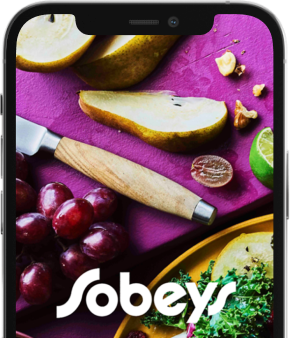Making jam is easy. Wait, what? That’s right! With a few basic kitchen tools, a short list of ingredients and about 30 minutes, you can become a pro at stirring up no-cook jams. The flavours and colours of these spreads will be as bright and ripe as the fruits you’ve chosen. And just wait for the smiles that will greet you when you slather a little of this summery sunshine on toast or between cake layers.
How Does It Work?
Most no-cook jams are designed to be stored in the freezer, like our No-Cook Tangy Blueberry Freezer Jam. A temperature of 0°F (–18°C) or lower keeps them food-safe, so you don’t have to use heat (i.e., a boiling water canner) to preserve them. That means your kitchen won’t turn into a sauna during a heat wave because there’s no need to fire up the stove!
So what’s the difference between a freezer and a fridge jam? Zip, zilch, nada. The name only tells you where the jam is stored, as the two aren’t prepared any differently. And you can successfully keep any no-cook jam in either place. The fridge is good for storing small batches — one or two jars — of no-cook jams that will be eaten within three weeks; tuck big batches in the freezer, where they will keep for up to six months.
Tools
You don’t need anything fancy to make no-cook jams; just simple day-to-day items, including a big bowl, a potato masher or an immersion blender, a whisk, a spoon and a ladle.
Containers
Check your cupboards for reusable plastic airtight containers — round ones with screw-top lids are ideal for the freezer. Use glass jars only if your no-cook jam is going into the refrigerator. Glass can crack or shatter when the contents expand during freezing.
Ingredients
You can count the ingredients for making most recipes on one hand, and many are already waiting in your cupboards.
- Fruit: A good rule of thumb: If you can easily mash a fruit when raw, it will work well in no-cook jam. (Frozen fruit contains too much water, which can prevent setting, so fresh is better.) Think strawberries, raspberries, blueberries, blackcurrants and mango. Tomatoes and stone fruits, such as peaches and apricots, need to be peeled and pitted first. Because these jams aren’t cooked, you’ll get the best results with fruit that is ripe and sweet.When mashing, make sure any chunks are small enough for easy spreading. Jams made from berries with skins, like blueberries, turn out even better if the fruit goes into a food processor or under an immersion blender for a few seconds — it will break up their thick coverings more easily than a potato masher. Press the mashed fruit through a fine-mesh sieve to remove any seeds, if desired; this is a must if you like your raspberry, blackberry or currant jam on the smooth side.
- Sugar: Most no-cook jams use granulated sugar (here at Sobeys, we just call that “sugar” in our recipes), which acts as a preservative. Reducing the amount will change the consistency of the jam and shorten its shelf life, so stick to the measure called for in the recipe. You can change up the sweetener a bit, if you like. Honey is an obvious substitution, but if you’re vegan, try maple syrup, agave syrup or coconut sugar. It may take a little experimentation to figure out the proportions, but it’s delicious work! Tip: You can create no-cook jams with artificial sweeteners instead of sugar, but make sure to buy sugar-free freezer jam pectin, which is designed to work with them.
- Pectin: Pectin is a natural substance found in many fruits that helps jams set and creates their thick, spreadable texture. Most of the fruits used to make jam are low in pectin, so it needs to be added. Freezer jam pectin — sold in powder form — is made specifically for no-cook jams; you can also use liquid pectin, as we have in our recipes. It’s important to follow the package directions to the letter and whisk vigorously to keep lumps at bay. Even with added pectin, some no-cook jams will have a thinner consistency than cooked ones because heat hasn’t evaporated the natural moisture in the fruit. (Not our No-Cook Tangy Blueberry Freezer Jam, though — it has the perfect jammy thickness.)
- Flavourings: You can easily customize your no-cook jams. Try adding citrus zest and juice (blueberries with lemon are especially nice). Fresh herbs will retain their bold flavour because they are not cooked in these jams, so try combinations like basil with peaches, strawberry with lavender or cilantro with tomato. Make a riff on our No-Cook Raspberry, Coconut & Cardamom Jam by changing up the ground sweet spices, or adding rosewater or vanilla extract. Even a little alcohol, such as rum or whisky, can be stirred into no-cook jams — just a small spoonful, though, as too much can affect setting.
Storage: Keep no-cook jams for up to three weeks in the refrigerator and up to six months in the freezer.
Pro Dos and Don’ts
- Don’t use blemished fruit because it can contain bacteria that will spoil the jam.
- Do make sure fruit is mashed evenly, with no large chunks remaining.
- Do stir the mixture until the sugar is completely dissolved for the best flavour and texture.
- Do put a dated label on the container. If your jam is going straight into the fridge, eat it up within three weeks of that date. If it’s going into the freezer, store it for up to six months. Once you thaw and open the container, keep it in the fridge and use it up within three weeks.





